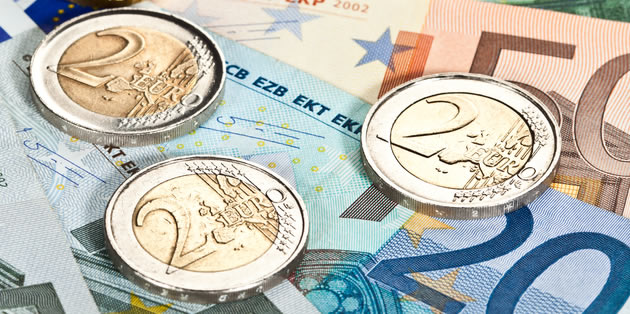The Euro to Australian Dollar (EUR/AUD), Euro to Chinese Yuan (EUR/CNY) and Euro to Japanese Yen (EUR/JPY) exchange rates were all trending lower in the first half of Monday’s European trading as Greek negotiations became even more uncertain and investors attempted to price in the possibility of a ‘Grexit’.
With June approaching, here are some key dates for #Greece next month. pic.twitter.com/N31q1Kd22n
— MacroPolis (@MacroPolis_gr) May 28, 2015
Goldman Sachs Forecast Political Shakeup in Order to Resolve Greek Crisis, Euro (EUR) Exchange Rate Sinks
Goldman Sachs has weighed in on the situation, saying that Greece may need to hold a new election, referendum or introduce capital controls on bank deposits in order to secure a deal.
Goldman Sachs economist Huw Pill commented: ‘The ongoing negotiations between Greece and its official creditors are intensely political. And forward-looking economic rationality is not characteristic of such interactions.’
‘Not only is it possible that we may need to see technical default and deposit blocks in order to come to a new programme, it may be necessary to do so in order to break the current impasse in negotiations.’
Safe-Haven Japanese Yen (JPY) Exchange Rate Climbs as Japanese Capex Figures Increase
Meanwhile, the Japanese Yen was offered some support when Japanese Capital Spending rose by 7.3% in the first quarter, registering the fastest growth in the past year. Investors saw the possibility of a pick-up in economic growth after the surge in business investment which allowed the Yen to recover some losses from recent weeks.
The safe-haven Yen has been trending lower in recent days as investors’ price in the possibility of increased Bank of Japan (BoJ) stimulus measures.
Economist Hidenobu Tokuda stated: ‘Capital expenditure looks particularly strong. The drag on the economy caused by the sales tax hike last year has ended. The decline in inventories is also a positive. Policymakers have reason to be optimistic.’
Additionally, the latest Markit Japanese Manufacturing PMI jumped out of contraction at 49.9 in April, to growth territory at 50.9 in May.
Markit economist Amy Brownbill commented: ‘The latest PMI signalled an improvement in operating conditions in the Japanese manufacturing sector. Both growth in production and new orders resumed, having contracted in the previous survey period. According to survey participants a rise in client demand helped by new product launches and enhanced marketing strategies left to the latest increase in new work intakes.’
Japanese Labour Cash Earnings, Real Cash Earnings and Monetary Base stats are all due out in Tuesday’s session which could have a moderate influence on the Yen (JPY) exchange rate.
Chinese Yuan (CNY) Exchange Rate Supported by Manufacturing Rise, Will the PBoC Cut Rates to Encourage Growth?
The Chinese Yuan also enjoyed some support against the Euro (CNY/EUR) on Monday after a mixed bag of Chinese ecostats emerged. China’s Manufacturing Purchasing Managers Index (PMI) rose from 50.1 to 50.2 in May, a little lower than the 50.3 forecast but still a six-month high. Additionally, the Chinese Non-Manufacturing PMI slipped from 53.4 to 53.2 in May.
The People’s Bank of China (PBoC) has been rather relentlessly increasing its monetary stimulus programme in an attempt to spur growth in the nation. However, ecostats have been registering a slowdown and economists now believe further easing may be required.
Markit economist Annabel Fiddes commented: ‘The headline PMI signalled a further deterioration in the health of China’s manufacturing sector in May. More stimulus measures may be required to help boost domestic demand and recover some growth momentum.’
Australian Dollar (AUD) Exchange Rate Forecast for Losses if RBA Cuts Interest Rates Again
Meanwhile, the Australian Dollar is in for a big week ahead with several majorly influential events scheduled to take place. The Reserve Bank of Australia (RBA) is due to announce its latest interest rate decision on Tuesday and investors are pricing in the likelihood of a rate cut.
The possibility of lower rates has been slowly rising as Australia’s economy performs less favourably and the threat of a housing market bubble increases. However, Monday saw the Australian manufacturing sector bounce back and increase hopes that the central bank may refrain from making another cut so soon. May saw the RBA drop the official cash rate to 2.0%.
The AiG Australian Performance of Manufacturing Index reached 52.3 in May, firmly above the 50.0 marker which denotes growth and advancing from the April 48.0 reading.
Euro to Australian Dollar (EUR/AUD), Chinese Yuan (EUR/CNY) and Japanese Yen (EUR/JPY) Exchange Rate Forecast
The Euro (EUR) exchange rate is likely to continue fluctuating on any progress in Greece, as well as from economic data. Tuesday’s Eurozone Consumer Price Index (CPI), German Unemployment Rate and Unemployment Change stats could be a major cause for Euro movement, as could the European Central Bank’s (ECB) interest rate announcement on Wednesday.
UPDATE: The RBA decided to keep rates on hold at 2.0% after making two 25 basis point cuts this year already.
The Euro to Chinese Yuan (EUR/CNY) exchange rate is trading at 6.7895. The Euro to Japanese Yen (EUR/JPY) exchange rate is trending in the region of 138.1600. The Euro to Australian Dollar (EUR/AUD) exchange rate is trending at 1.4285.



